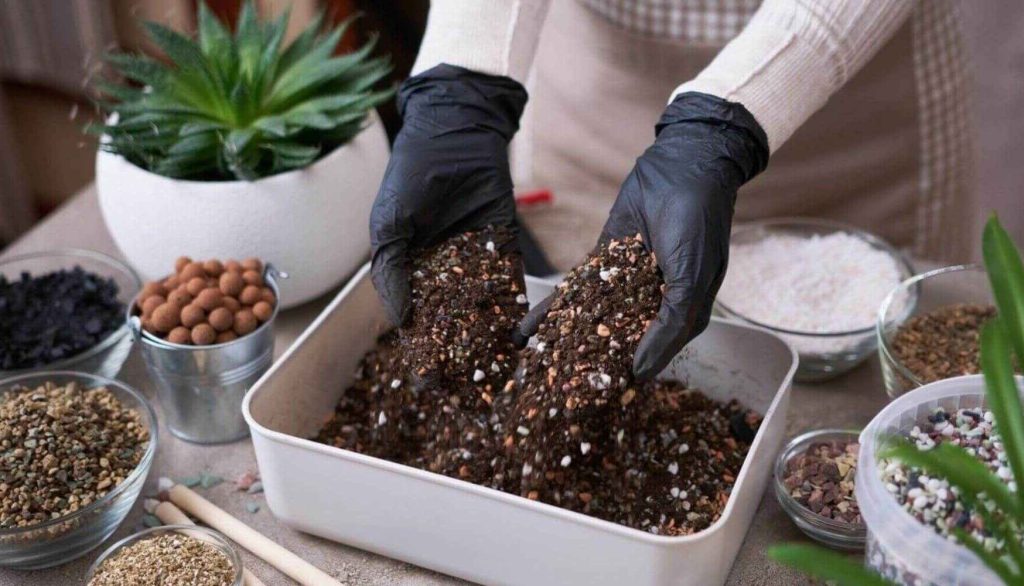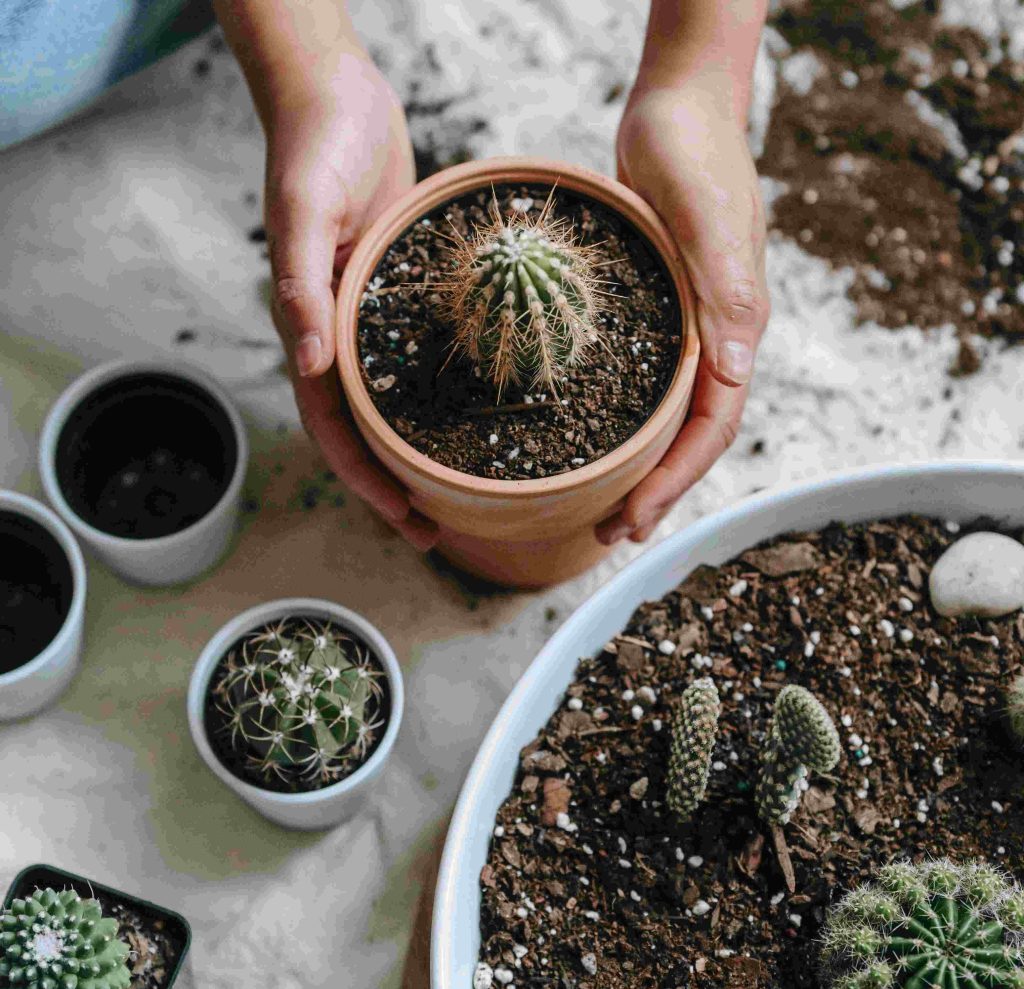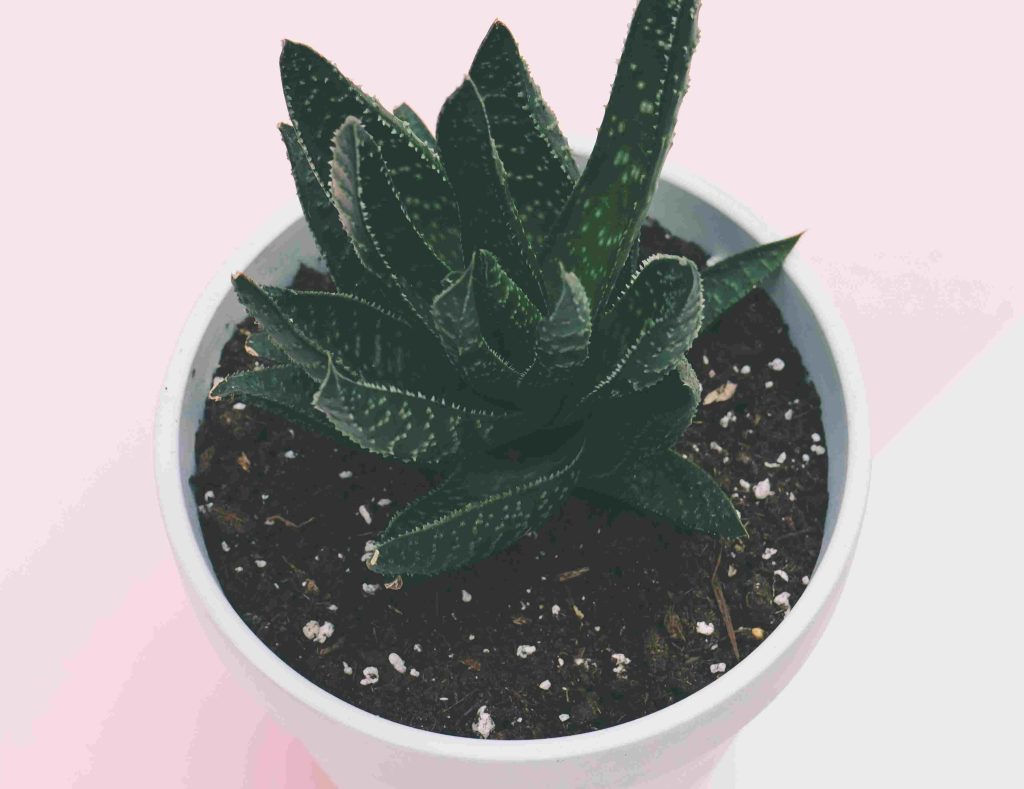Succulents are some of the most loved indoor plants—and for good reason! They’re low-maintenance, come in all sorts of shapes and sizes, and can brighten up any space with their unique charm. But here’s the thing: if you want your succulents to stay happy and healthy, the type of soil you use is super important.
Unlike regular plants, succulents don’t like sitting in soggy soil. They’re used to dry, well-draining environments, and putting them in the wrong kind of soil can lead to problems like root rot. The good news? Picking or creating the right soil isn’t hard once you know what to look for.
In this blog, we’ll explore what makes the perfect soil for succulents. Whether you’re buying it from a store or mixing it yourself, I’ll share everything you need to know to keep your plants thriving. Ready to dig in? Let’s get started!
Understanding Succulent Needs
Before we talk about the best soil, let’s take a step back and understand what succulents actually need. These plants are natural survivors. They come from dry, arid places like deserts where rain is rare, and the soil dries out quickly.
Succulents have thick, fleshy leaves that store water, which means they don’t need to sit in damp soil. In fact, too much moisture can harm them by causing root rot—a common killer of succulents.
What succulents do love is soil that mimics their natural environment. Think loose, gritty soil that lets water drain away quickly. They also need good airflow around their roots. Imagine a soil that’s light and crumbly, not dense and heavy.
The bottom line? Succulents want their roots to breathe and stay dry most of the time. If you can give them soil that checks these boxes, you’ll have happy, thriving plants! Next, let’s dive into what that soil looks like.
Key Characteristics of the Best Soil for Succulents
Not all soil is created equal—especially when it comes to succulents. These picky plants need a specific kind of soil to thrive. Here are the key features that make the perfect succulent soil:

1. Well-Draining
This is non-negotiable! Succulents can’t stand sitting in water. The soil should let water flow through quickly, leaving just enough moisture for the roots to absorb. A good test? Pour water in and watch—it should drain within seconds, not minutes.
2. Low in Nutrients
It might surprise you, but succulents don’t need a nutrient-packed soil. Too much organic matter can hold water and lead to problems. A lean, mineral-rich mix is ideal.
3. Gritty and Loose Texture
Forget dense or compacted soil. Succulents prefer something light and airy. A gritty mix helps water drain faster and improves airflow to the roots, keeping them healthy and happy.
When you get these three things right, you’re already setting your succulents up for success. In the next section, we’ll look at your options—whether you want to grab a bag of pre-made mix or try your hand at making your own!
Store-Bought vs. DIY Succulent Soil Mix
When it comes to choosing soil for your succulents, you have two solid options: buy a pre-made mix or create your own. Both have their perks, so let’s break it down and help you decide what works best for you.
Store-Bought Succulent Soil
Pre-made succulent soil mixes are a lifesaver if you’re short on time or just starting out. They’re specifically designed to meet succulents’ needs, with good drainage and a gritty texture.
When shopping for a mix, here’s what to look for:
- The label should say “for cacti and succulents.”
- The soil should feel light and airy, not dense or clumpy.
- Bonus points if it contains perlite, pumice, or sand for better drainage.
Some popular brands make excellent succulent soil that’s ready to use right out of the bag. This is the quickest and easiest option for beginners or anyone who doesn’t want to experiment with soil recipes.

DIY Succulent Soil Mix
Feeling a bit crafty? Making your own soil mix is not only fun but also budget-friendly. Plus, you can customize it based on your succulent collection and growing conditions.
Here’s a simple recipe to get started:
- Base: Use regular potting soil or garden soil (40%).
- Gritty Additives: Add sand, perlite, or pumice (40%). These improve drainage and aeration.
- Optional Boost: Mix in small gravel or crushed stones (20%) for extra grit.
Pro Tip: Avoid beach sand—it’s too fine and can hold water. Instead, go for coarse sand from a garden store.
Once you mix these ingredients together, you’ll have the perfect soil for your succulents. It’s light, drains well, and mimics the kind of soil they love in the wild.
Whether you choose store-bought or DIY, the key is to focus on drainage and texture. Your succulents will thank you for it! Up next, let’s talk about the factors to consider when choosing the right soil for your plants.
Factors to Consider When Choosing Soil
Not all succulent setups are the same. Choosing the best soil depends on more than just what’s in the bag or mix. Here are a few factors to keep in mind when deciding what soil works best for your plants and environment.
1. Indoor vs. Outdoor Growing
- Indoors: Since indoor succulents rely on you for watering, you’ll need soil that drains extra well. Indoor pots don’t dry out as fast as outdoor ones, so a gritty mix is a must to avoid soggy roots.
- Outdoors: Outdoor succulents, especially those in hot or dry climates, can handle slightly heavier soil. However, good drainage is still crucial to prevent overwatering after rain.
2. Climate and Humidity
- If you live in a humid area, your soil needs to drain even faster. High humidity can slow down drying, which isn’t good for succulents. Add more sand or perlite to your mix to speed things up.
- In a dry climate, soil that retains a little moisture for longer may actually help your succulents.
3. Pot Type
The type of pot you use makes a big difference in how soil behaves:
- Pots with Drainage Holes: These are ideal for succulents. Excess water can escape, so the soil won’t stay wet.
- Pots Without Drainage Holes: If your pot doesn’t have a hole, use a soil mix with extra sand or perlite to improve drainage, and water sparingly.
4. Size of the Plant and Pot
Smaller succulents in tiny pots dry out quicker, so they may need slightly less gritty soil. Larger succulents, or those in bigger pots, benefit from very fast-draining soil since the volume of soil holds more water.
5. Light Exposure
Plants in bright, sunny spots usually dry out faster, so their soil mix can afford to hold a bit more moisture. On the other hand, succulents in shadier areas need super-fast draining soil to avoid staying wet for too long.
By tailoring your soil choice to these factors, you’ll create the perfect environment for your succulents to thrive. Next, let’s talk about common mistakes you’ll want to avoid when picking or preparing soil!

Common Mistakes to Avoid
Even with the best intentions, it’s easy to make mistakes when choosing or using soil for your succulents. Here are the most common ones to watch out for—and how to avoid them.
1. Using Regular Garden Soil
Regular garden soil might work for other plants, but it’s a no-go for succulents. It holds too much water and can get compacted, suffocating the roots. Always choose or mix soil specifically designed for good drainage.
2. Overwatering
Even with the perfect soil, overwatering can still harm your succulents. Remember, the right soil drains quickly, but it’s up to you to let it dry out completely before watering again. A moisture meter can help if you’re unsure.
3. Skipping Soil Additives
If you’re mixing your own soil, don’t forget to add ingredients like sand, perlite, or pumice. These are the magic ingredients that create the fast-draining, gritty texture succulents need.
4. Ignoring the Pot’s Drainage
Putting well-draining soil in a pot without drainage holes is like putting your succulents on thin ice. Excess water has nowhere to go, leaving the roots at risk of drowning. If your favorite pot doesn’t have a hole, be extra careful with watering or consider adding a drainage layer at the bottom.
5. Using Soil That’s Too Dense
Soil that’s heavy or clumps together can smother your succulents’ roots. If the soil doesn’t crumble easily in your hands, it’s not ideal. Light, airy soil is key to healthy roots and happy plants.
6. Forgetting to Adjust for Climate
One-size-fits-all doesn’t apply to succulent soil. What works in a dry climate may not work in a humid one. Always adjust your mix based on your local conditions for the best results.
Avoid these mistakes, and you’ll save your succulents from common pitfalls. Up next, I’ll answer some frequently asked questions to clear up any lingering doubts!
FAQs About Succulent Soil
Got questions about succulent soil? You’re not alone! Here are answers to some of the most common queries to help you grow healthy, happy succulents.
1. Can You Use Cactus Soil for Succulents?
Absolutely! Cactus soil is often perfect for succulents because it’s designed for good drainage and aeration. However, you might still need to tweak it. If the mix feels too dense, try adding extra perlite or sand for even better results.
2. Do Succulents Need Fertilizer in Their Soil?
Succulents don’t need a lot of nutrients, but a little fertilizer can give them a boost during the growing season (spring and summer). Use a diluted succulent fertilizer sparingly—about once a month. Avoid heavy-feeding them; too much fertilizer can do more harm than good.
3. How Often Should You Change the Soil?
Over time, soil can break down and lose its ability to drain well. It’s a good idea to repot your succulents every 1–2 years, refreshing the soil to keep it loose and nutrient-efficient.
4. Can You Use Garden Soil If You Add Sand?
While sand improves drainage, garden soil is still too dense for succulents, even with sand added. It’s better to start with a light potting mix and then add sand, perlite, or pumice for the right texture.
5. What’s the Best Soil Mix for Beginners?
If you’re new to succulents, start with a store-bought cactus or succulent mix. It’s a foolproof option that’s ready to use. As you gain confidence, you can experiment with DIY mixes to customize your plants’ needs.
Hopefully, these answers clear up some of the confusion around succulent soil. Next, let’s wrap it all up with a quick recap and final tips to keep your succulents thriving!
Final Tips
Finding the best soil for your succulents doesn’t have to be complicated. The key is understanding their needs: well-draining, gritty soil that mimics their natural habitat. Whether you go for a store-bought mix or make your own, always prioritize drainage and texture to keep your plants happy and healthy.
Here are some final tips to wrap things up:
- When in doubt, less is more. Succulents thrive on neglect more than overcare. Let the soil dry out completely before watering again.
- Choose the right pot. Always aim for pots with drainage holes, and pair them with fast-draining soil for the perfect setup.
- Keep experimenting. If one soil mix doesn’t work for you, don’t give up! Adjust your recipe or switch to a different pre-made mix until you find what works best for your environment.
With the right soil and a little love, your succulents will thrive, bringing joy and greenery to your space. So grab your pots, mix your soil, and give your plants the perfect home they deserve!
Got more questions or tips about succulent soil? Drop them in the comments—I’d love to hear from you!

